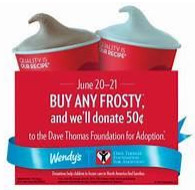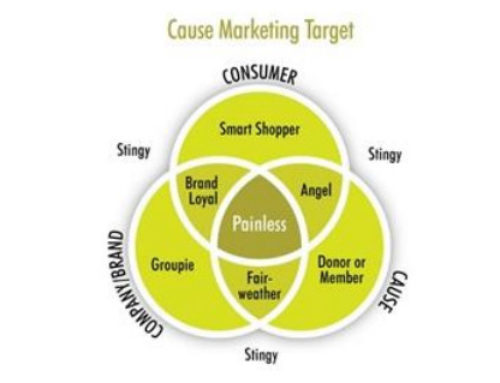In the 21st century, it is clear that the integration of social issues and business practices was not a passing fad for the 1990s, but rather the beginning of a fundamental shift in how the world’s leading companies will use cause associations to position their organizations and brands for the future.
Today’s pioneers are turning a concern for causes into long-term brand equity. At companies such as Avon, The Home Depot, Target, Timberland and ConAgra, comprehensive social commitments have become an integral way to conduct business and a core component of corporate reputation, brand personality and organizational identity.
This is good news for corporations and nonprofits alike. Just as companies are finding it harder to “out innovate” or “out advertise” their competitors in a marketplace increasingly saturated with new brands, nonprofits too are competing with rival organizations for corporate support and public awareness. Strategic cause programs provide companies and nonprofits with valuable leadership and differentiation strategies as well as enhanced brand equity and credibility, greater reach and significant resources and relationships. Now, more than ever, corporations and nonprofits are realizing the power of aligning companies and causes.
The Evolution of Cause-Related Marketing
Cause marketing has evolved from a short-term tactic used to spike sales into a powerful positioning discipline used to enliven brand equity and enhance corporate image with significant bottom-line and community impacts. Cone calls this emerging business practice “Cause Branding.”

In 1993, the first Cone/Roper study captured consumers’ enthusiasm for this evolving trend and gave executives and nonprofits benchmark results and fresh ammunition to create a burst of cause programs. During this time, innovative companies began to recognize the power of cause programs to create additional value, beyond just shortterm increases in sales.
By 1998, cause marketing had become a common practice. According to International Events Group (IEG), corporate investment in cause programs jumped more than 400 percent from $125 million in 1990 to $545 million in 1998. Consumers were paying attention and rewarding companies who were differentiating their products and services.
Cause Branding Today
 Today, cause programs have become a standard and widely accepted business practice with many of the world’s largest companies running comprehensive campaigns supported by substantial advertising and communications resources. Today’s pioneers realize that it is no longer about being just loosely associated with a cause or partnering with a nonprofit organization – it is now about integrating the concern and commitment for a cause into a core component of an organization’s business strategy.
Today, cause programs have become a standard and widely accepted business practice with many of the world’s largest companies running comprehensive campaigns supported by substantial advertising and communications resources. Today’s pioneers realize that it is no longer about being just loosely associated with a cause or partnering with a nonprofit organization – it is now about integrating the concern and commitment for a cause into a core component of an organization’s business strategy.
The Cone/Roper Cause Related Trends Report finds that Americans solidly and consistently support cause-related activities and that companies see benefits to their brand’s reputation, image and bottom line. Americans expect businesses to address social issues, and the acceptability of cause marketing has reached a high of 74 percent, up from 66 percent in the previous survey. Consumers’ likelihood to switch brands or retailers (66% and 61% respectively) has remained solidly consistent since 1993. Having a cause program has become a “must do” in the marketplace for companies to remain competitive.
Cause programs also positively impact employees. The findings of the latest Cone/Roper Executive Study confirm the importance of Cause Branding programs in the race to hire and retain the best employees in a highly competitive marketplace. Cause Branding strengthens internal corporate cultures and has a dramatic influence on employee pride, morale and loyalty.
 Best Practices for Cause Branding
Best Practices for Cause Branding
For corporations and nonprofits to develop sustainable and comprehensive Cause Branding partnerships, they should keep in mind several critical best practices:
- Know your brand. Deeply understand your organization, including your goals, assets and challenges. Know your partners. Identify intimately with your partners. Know their objectives, strengths and limitations.

- Secure senior-level support. Rally senior executives who are dedicated to making a sincere commitment and using a variety of financial and human resources to support a comprehensive program.
- Create a long-term, branded program. Create a brand identity for your program, incorporating creative, unique and relevant elements that complement and enhance your brand equity. Add and refine program enhancements regularly to enhance credibility and results.
- Communicate, communicate, communicate. Utilize all available communications vehicles to increase awareness of your partnerships. The latest Cone/Roper Executive Study finds that well-communicated cause programs are 129 percent more successful in enhancing a company’s reputation than programs that are not communicated at all.

Case Study: ConAgra Feeding Children Better
Corporate social responsibility has always been a top priority for ConAgra, one of the world’s largest food manufacturers. However, the company wanted to convert its portfolio of widespread giving into a strategically focused program that impacts a single issue – a cannon shot versus its former rifle shot approach. ConAgra also wanted its program to become a rallying point for its employees and operating companies and provide opportunities to deepen relationships with its key retail and grocery customers. In October 1999, ConAgra launched Feeding Children Better, a multi-year, multimilliondollar program to end childhood hunger in America.
By integrating its commitment to ending hunger into its overall business strategy, ConAgra is making a long-lasting investment in the communities where ConAgra employees, customers and business partners live and work.

ConAgra has opened 75 new Kids Cafes – kids only after school feeding programs. ConAgra is also transforming the hunger relief distribution system in the U.S. by funding the Rapid Food Distribution System to recapture hundreds of millions of pounds of food that now goes to waste in this country.
“Many Americans often do not realize that more than 30 million Americans go
hungry – and that 40 percent of those in soup lines are children.”
Most importantly, ConAgra is battling the misperception that hunger is not a problem in this country. Because the economy has been booming since 1991, many Americans often do not realize that more than 30 million Americans go hungry – and that 40 percent of those in soup lines are children. To publicize these stark facts, ConAgra is developing a three-year national multimedia public awareness campaign that will bring the silent epidemic of childhood hunger into the spotlight.
In less than one year, ConAgra Feeding Children Better has rallied 80,000 employees from the company’s 70 plants and operating facilities to raise more than 200 tons of food. ConAgra has also strengthened relationships with key retail grocery customers by partnering with them to connect ConAgra brands with a cause that resonates with consumers and drives grocery business.
What Do You Stand For?
As cause marketing continues to evolve, so too will the public’s expectations about how companies address social issues. In the next century, “What do you stand for?” will become one of the most commonly asked questions by potential donors, employees, investors and business partners before entering into any relationship.
There is no turning back now. Cause Branding falls at the intersection of corporate strategy and citizenship and is fast becoming a “must do” practices for the 21st century.
Carol Cone is CEO of Cone, Inc., a strategic marketing communications firm and coauthor of the Cone/Roper Report used by the marketing profession and media to evaluate the importance of brand marketing.







Leave A Comment